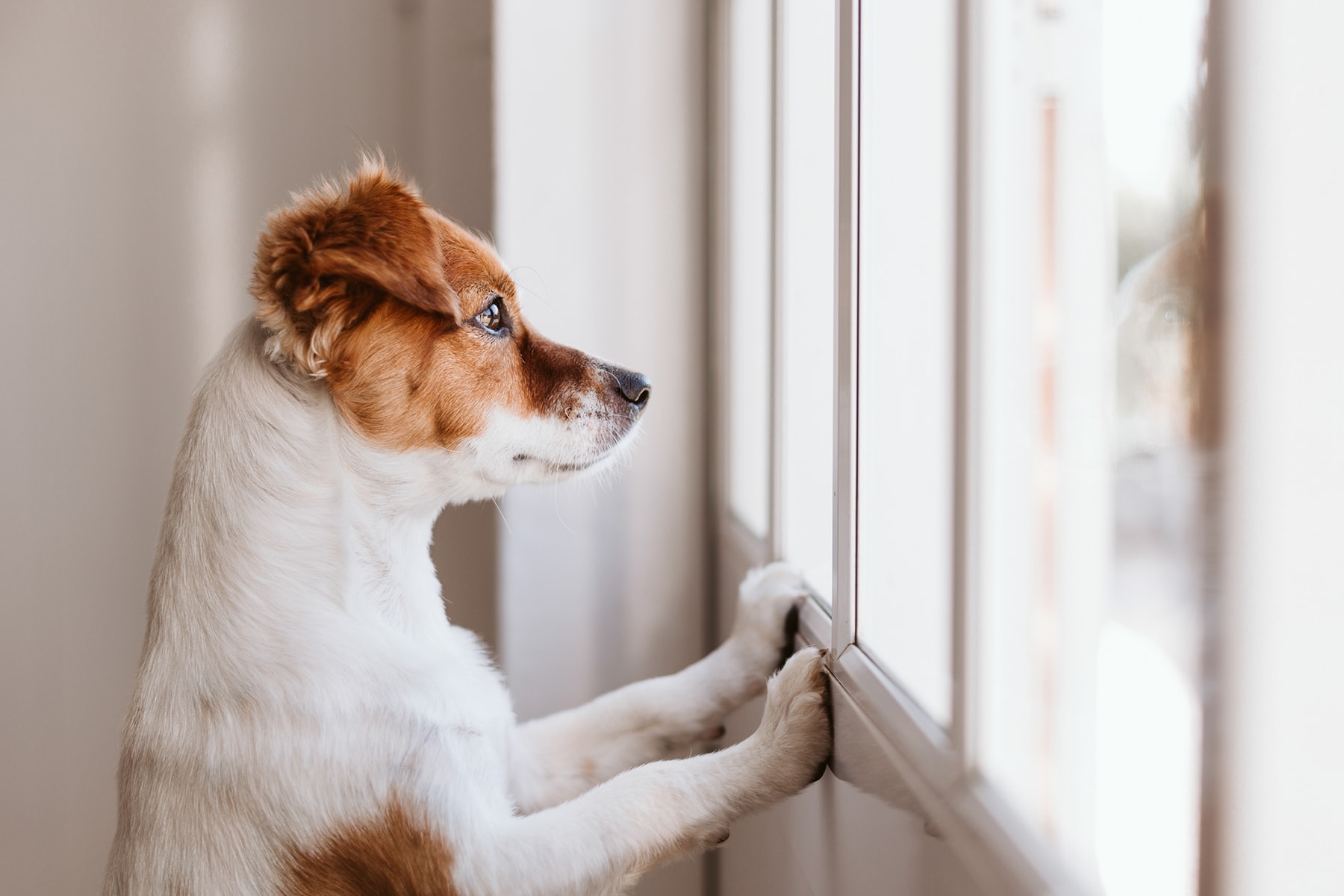5 TIPS TO HELP YOUR PETS ADJUST WHEN YOU GO BACK TO WORK
If quarantine brought a new furball into the family or led you to spend more quality time with the pets you have, you know that returning to your former routine means a bittersweet goodbye. Your pet, who was blissfully unaware of world events over the past few months, grew accustomed to you being around more often. To leave them suddenly without easing back into normalcy can cause stress and behavioral issues. Keep reading for five tips on helping your pet overcome this change.
1. Practice Arrival and Departure Rituals
Your pet is a smart creature who picks up on patterns that its pack (your family!) displays in daily life. These patterns help communicate to your pet what is happening and how they should react to this event. Two of the most significant patterns in your pet’s life are your arrival and departure from home. Jingling keys, putting on shoes, and even saying goodbye are all part of the “rituals” that your pet associates with your absence. Similarly, if your pet is often sitting at the door when you come home, you may have given them some clues that you were nearby, like pulling into the driveway or checking the mailbox.
Improper preparation of these rituals before returning to work can cause separation anxiety in your pet, so if you’re afraid you may be accidentally stressing your dog or noticed some new behavior in your cat, listen to the experts.
2. Start Modifying Routines Gradually
Food
The sound of a bowl scraping the kitchen floor or hungry meows in the early in the morning are nobody’s favorite alarm clock. If your pet’s feeding schedule has changed during quarantine, work on getting them back on track before you won’t be around to fill their belly. Some pets may be particular about when and where they eat, who is around while they eat, and other picky quirks. For some pets with the opposite issue, microchip bowls or auto-feeders offer a controlled feeding solution for their voracious appetite. If you suspect that your pet might need retraining at mealtimes, start working on these new routines sooner rather than later.
Sleep
Here’s one that you should be practicing for yourself, too. Telecommuting, special operating hours, or time off from work can all do a number on a once-disciplined sleep schedule. Pets who share the bedroom or enjoy their daily naps will need time for their circadian rhythm to adjust to new sleeping and waking hours. If your schedule has significantly changed, begin by moving bedtime and alarms in fifteen-to-thirty-minute increments until you reach your desired time.
Walks and Playtime
With lock-downs in place and many local businesses and entertainment options closed, dogs saw more walking in the last few months than likely ever before. All of this quality time and exercise has not gone unnoticed by your pets, who may grow restless or gain weight as this extra attention goes away. Note the differences in your pet’s energy levels based on the amount of time spent together and find a comfortable compromise for you and your pet going forward. Both over- and under-stimulation can lead to behavioral issues including, but not limited to destructiveness, accidents, and fatigue.
3. Schedule Last-Minute Appointments
Visit the Veterinarian
Though many practices are still operating under limited capacities, medical care and regular checkups for your pet are not to be neglected. Take advantage of unusual operating hours to make an appointment for a time you would normally be at work. If your primary veterinarian has no availability or appointments that fit your schedule, consider seeing another local vet just to give your pet the once-over. If your pet requires prescription medications, make sure to get refills and stock up for the next few months, just in case appointment availability remains slim.
See the Groomer
Similar to the vet, groomers may be operating under limited capacity, if at all. If you don’t trust your canine cosmetology skills or have a physical reminder of the last time you tried trimming the cat’s nails, a visit to the groomer may be in order. Especially during hotter months, it’s important to make sure that your pet is clean, comfortable, and not overheating. If your pet is especially nervous about baths or haircuts, try to keep them in the regular routine of experiencing these sensations to calm their anxieties.
4. Watch for Signs of Stress
Physical signs
Different animals display their stress in unique ways. Common signs to look out for are bathroom accidents, noisiness, destruction, pacing and restlessness, escaping, and unconfident body language. If your pet begins exhibiting any of these symptoms, visit the vet to first rule out health complications. Similarly, review any other changes around the home that may be adding to your pet’s stress. Your absence may not be the only new stressor in your pet’s life.
Boredom busters
Depending on who lives in your home and whether or not you have any other animals, your pet may be losing all of its primary companions in a short amount of time. Have a plan for how you will keep them entertained or distracted, especially during the transitional period when they grow accustomed to you leaving again. Rearranging your furniture for your cat to gain new window vantage points or investing in good quality dog puzzle toys will go a long way in easing your pet’s worries when you’re away.
5. Don’t Forget About Small Animals
Dogs and cats aren’t the only household pets whose routines are affected with a change of schedule. Highly social animals like birds can grow depressed if they are left alone in a quiet home all day and many small rodents need regular handling to remain tame. These animals also require their living spaces to be kept clean in order to stay healthy, so make a habit of washing their enclosure with pet-safe cleaners and fresh substrate. Exotics like reptiles or ferrets may have even more limited veterinary options during this time, so routine inspections for signs of injury or illness could save a life.
In summary, pets are part of our family. Over the last several months, we’ve learned that more than ever, as humans have experienced a wide range of emotions, whether around health, financial or social concerns. And for those of us who are pet owners, our pets have provided reliability and companionship when perhaps we needed it the most. As you or your family members slowly work back to a sense of normalcy and begin to leave the house more often, be sure to take steps so that your furry loved one does not experience his or her own sense of distancing as well.


